Artificial intelligence (AI) isn’t coming to imaging in rheumatology, it is already here. There is significant potential to improve clinical outcomes and workflows, but the transition from traditional practice to AI-assisted practice is neither short nor straight.

“AI has a real role to play in ILD (interstitial lung disease) imaging,” said David Liew, MBBS, FRACP, Radiologist and Clinical Pharmacologist, Austin Health, Melbourne, Australia, referencing a potential serious complication of autoimmune rheumatic diseases. “We are at an exciting juncture with AI imaging because we might be ready to help solve real clinical problems.”
Dr. Liew opened a special session exploring An Emerging Role for Artificial Intelligence in Imaging for Diagnosis and Management of Rheumatic Conditions on Tuesday morning. Recorded sessions at ACR Convergence 2025 will be available on demand to all registered meeting participants within 72 hours of the live presentation through October 31, 2026, by logging into the meeting website.
ILD is a strong candidate for AI, Dr. Liew said, because ILD imaging, diagnosis, and management are highly variable based on disease subtype classification, variations between imaging technicians, variations between phenotypes, variable disease progression, variability and disagreement in image interpretation, uncertainty in the application of specific imaging features to diagnosis and/or prognosis, and more.
AI can help improve disease assessment, disease type identification, and classification. It can also help better predict progression, better manage workflow, and better identify appropriate treatment.
Most AI systems used in medicine are specialists, focused on specific tasks or diseases, Dr. Liew explained. Better-known AI systems, such as ChatGPT, Claude, Gemini, and Perplexity, are systems with broad but relatively shallow capabilities and are generally weak in medical training.
In ILD, AI can offer improved measurement of lung volume that is consistent between subjects, consistent across time points, independent of variable, and is able to assess actual fibrosis. AI can also help improve ILD subtype classification, which is highly variable in current practice, and predict progression more accurately than human clinicians.
AI can also improve workflows. Dr. Liew noted that many community health centers find it difficult to implement best practices developed at academic health centers. AI can help smooth implementation in areas, such as “friction generated by suspicion on CT.”
Treatment decisions are another area ripe for AI help. Uptake of antifibrotic therapies have been limited, at least in part, by difficulties in identifying the most appropriate patient populations. AI can help identify and integrate the most relevant patient characteristics with approved indications and/or documented off-label use, cost and reimbursement, and projected outcomes.
“AI remains a tool to support us and our teams,” Dr. Liew said. “Issues with human impact need a human interface. Clinicians will always be needed in conjunction with AI.”

Multiple clinical trials have already shown that AI can be as good as or better than expert osteoarthritis (OA) clinicians. The emphasis is on “can be,” said Ali Guermazi, MD, PhD, MSc, Professor of Radiology and Medicine and Director of the Quantitative Imaging Center at Boston University Chobanian & Avedisian School of Medicine.
“Recent surveys suggest that approximately 90–95% of current AI users find FDA-cleared algorithms are inconsistently accurate when externally tested on their local data,” he said, quoting a recent paper.
The inconvenient truth about AI, he added, is that real-world OA clinics are no more reflective of the controlled environments designed into AI clinical trials than real-world OA patients are representative of the highly selected patients enrolled in trials.
“Any AI model needs training data, and that data needs to be fresh, clean, continuous, and representative,” he explained. “Real-world data is a mess.”
AI is already reshaping the medical landscape, he added. It holds tremendous promise, much of it supported by trial data, to enhance the detection and management of OA. Deep learning, a branch of AI, is widely used in OA, particularly for knee OA. Meanwhile, translating clinical trials into clinical practice remains problematic even as the need grows.
There is a growing shortfall between radiologist supply and the growing demand at hospitals, Dr. Guermazi said. There are also concerns about the lack of reliability in assessing knee OA on X-rays using Kellgren-Lawrence grading.
A European study found that adding AI assistance helped junior X-ray readers improve grading performance, and increased interobserver agreement across all readers and experience levels. Junior radiologists and orthopedists increased their accuracy by 20%.
A recent comparison of clinicians and AI found that AI algorithms can match or surpass clinicians in diagnostic accuracy for OA, especially when validated externally. AI models using baseline X-rays also outperformed traditional models of predicting OA progression using demographic and radiographic risk factors.
“AI is a friend and not a foe,” Dr. Guermazi said. “A clinician with AI will most certainly replace a clinician without AI in the future.”
Don’t Miss a Session

If you can’t make it to a live session during ACR Convergence 2025, make plans to watch the replay. All registered participants receive on-demand access to scientific sessions after the meeting through October 31, 2026.
